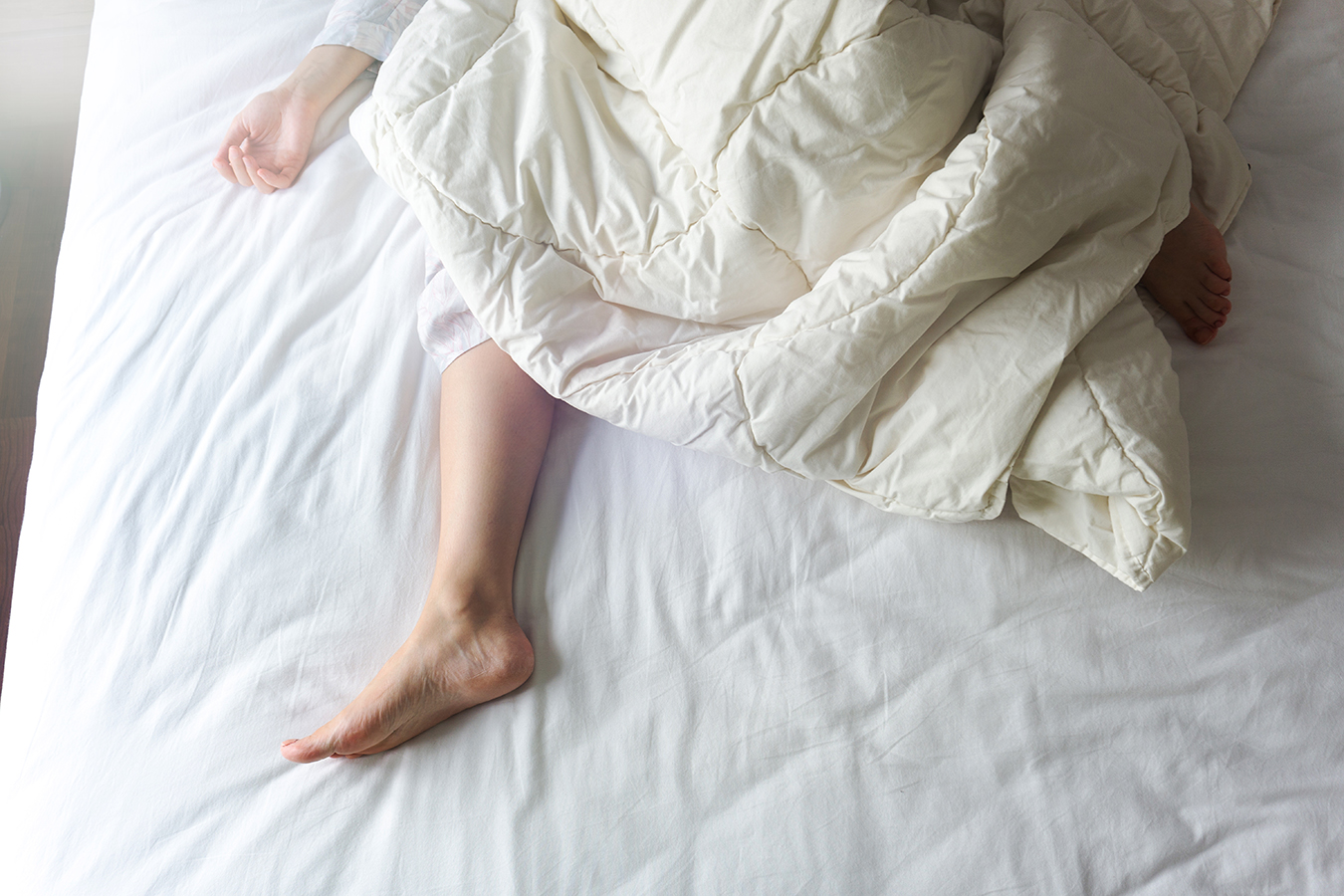Learning to Live with Restless Legs Syndrome

If you regularly get a good night’s sleep, you may take it for granted. However, the seven to 10% of Americans with restless legs syndrome (RLS) are not so lucky.
If you have RLS, bedtime is often accompanied by an irresistible urge to move your legs. The result? A whole lot of tossing and turning and not a lot of sleep.
Understanding RLS
Not only can its symptoms of RLS disrupt sleep and other aspects of daily life, but some cases cannot be cured. Even the cause is a bit of a mystery.
According to the National Institute of Neurological Disorders and Stroke, RLS may have a genetic component. It tends to run in families. Other medical conditions, such as end-stage renal disease, nerve damage, and sometimes pregnancy, may come with RLS as a co-condition. Iron deficiency, the use of certain medications, alcohol, nicotine, and caffeine can also contribute to the development of RLS.
RLS can vary in severity.
It may also be confused with other medical conditions, which can sometimes make diagnosis a challenge. Ihtsham Haq, M.D., neurologist and chief of Movement Disorders at the University of Miami Health System, says that patients and doctors need to look for the right signs and symptoms.
“With neurological illnesses, the most valuable information will always be what emerges from a patient’s mouth. RLS is no exception,” says Dr. Haq.
“Patients report a deep need to move their legs without typically complaining of cramping, tingling, or numbness. This need is worsened by inactivity and is partially or totally relieved by movement.”
Sometimes, RLS can become so severe that it impacts a patient’s daytime movement, but this is less frequent. “There are individuals for whom RLS causes significant daytime disability,” he says. “However, for most individuals, the problem is the difficulty getting to sleep and staying asleep that it causes.”
Insomnia and other sleep issues are some of the primary problems that arise from RLS. The Sleep Foundation notes that 88% of people with RLS report at least one sleep-related symptom as a result.
The good news about RLS?
Often, it can be managed through medications, self-care strategies, and other treatments. And if you have RLS that is due to an iron deficiency, it can even be cured. “RLS can often be caused by iron-deficiency anemia, so it is beneficial to get an iron profile if you have RLS,” says Dr. Haq. “If you have low levels on testing, then iron supplementation can cure the problem.”
Curbing caffeine, alcohol, and nicotine intake, especially close to bedtime, can also help curb the symptoms. In addition, the Sleep Foundation says that having a regular bedtime and a comfortable bedroom that is conducive to sleep can also help. Exercising earlier in the day, getting massages, and taking hot baths can reduce RLS symptoms and promote restful sleep.
Medications can also relieve symptoms for some people with RLS. But Dr. Haq recommends managing the symptoms with self-care strategies when possible.
“Treatment is reasonable whenever symptoms are troublesome, though it is important to rule out iron deficiency in particular first. It’s best not to mask a medical issue that might require attention.”
Wyatt Myers is a contributing writer for UMiami Health News.
Tags: Dr. Ihtsham Haq, movement disorders, neurology, restless legs syndrome, sleep disorder, sleep disruption
